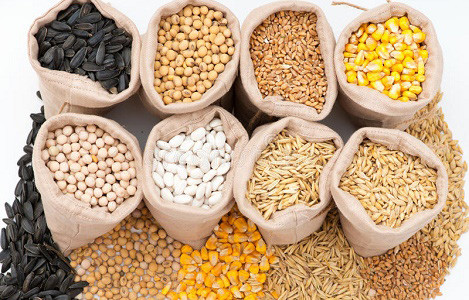 A report from the US Department of Agriculture (USDA) recently stated that African swine fever (ASF) will cause demand for animal feed in Vietnam to decrease from 23.8 million tonnes in 2018 to 23.7 million tonnes in 2019 and 23.5 million tonnes in 2020. (Source: internet)
A report from the US Department of Agriculture (USDA) recently stated that African swine fever (ASF) will cause demand for animal feed in Vietnam to decrease from 23.8 million tonnes in 2018 to 23.7 million tonnes in 2019 and 23.5 million tonnes in 2020. (Source: internet)Hanoi (VNS/VNA) - African swine fever hasnot only caused livestock farming households to fall into debt, but has alsomade it difficult for animal feed dealers to collect their payments.
If the epidemic continues, the domino effect couldbankrupt the livestock industry.
Since the spread of African swine fever inVietnam, a number of shops selling animal feed have been put in a bind becausethey have to sell animal feed to farmers on credit, while paying themanufacturers on receipt of the grains.
Pham Van Luong, a feed salesman in Nam Dinh’s Hai Hau district,said previously, his family sold an average of 20 tonnes of rice bran permonth. However, since the outbreak of African swine fever, over the past threemonths they have managed to sell just 5-6 tonnes of animal feed per month.
“I sell rice bran to farmers and they often paylater. However, for some months now, pigs have been infected and culled, sofarmers do not have money to pay me. Currently, I am owed nearly 2 billion VND(85,836 USD),” Luong told vneconomy.vn.
An animal feed manufacturer in the northernprovince of Hai Duong, PP Sun Vietnam Joint Stock Company, revealed sales haddeclined from an average of 2,000 tonnes per month to some 1,200-1,400 tonnes.Although the company has lowered the selling price by 5,000-10,000 VND per bagto stimulate demand, the situation has not improved. Therefore, the company hashad to cut production, said the firm’s director Dao Van Bac.
According to Tran Trong Quang, Deputy General Directorof Vinafeed Group, over the past three months, the company's feed consumptionhas decreased by about 30 percent compared to January, from 16,000 tonnes monthto 11,000 tonnes. Vinafeed's product prices have decreased by 7-8 percentcompared to January 2019.
Quang worries that animal feed enterprises willfail if the epidemic continues.
“Many livestock households are selling uninfectedpigs at any price, and are even selling sows. Therefore, the domino effectcould bankrupt the system of breeders, breeding animal providers and rice brandistribution agents even after the epidemic ends," he added.
Pham Duc Binh, Vice Chairman of the Vietnam AnimalFeed Association (VAFA), said the production of animal feed has decreased by atleast 30 percent.
In addition to farmers selling off all their pigs,it is also uncertain how the disease is spread. This is causing concern inother areas of the market.
A report from the US Department of Agriculture(USDA) recently stated that African swine fever will drive down demand foranimal feed in Vietnam from 23.8 million tonnes in 2018 to 23.7 million tonnesin 2019 and 23.5 million tonnes in 2020.
According to statistics from the GeneralDepartment of Vietnam Customs, in the first five months of 2019, Vietnam spentover 1.61 billion USD importing raw materials for animal feed production, ayear-on-year increase of 0.3 percent.
Main markets exporting livestock feed and rawmaterials for Vietnam include Argentina, the US, Brazil and China.
VAFA recommends that feed production and tradingenterprises should share difficulties with farmers, minimise production coststo reduce product prices and maintain competitiveness. Each enterprise alsoneeds to diversify products such as chicken bran, duck bran and seafood bran tomeet the diverse needs of the market, in order to improve production andbusiness efficiency.-VNS/VNA




























